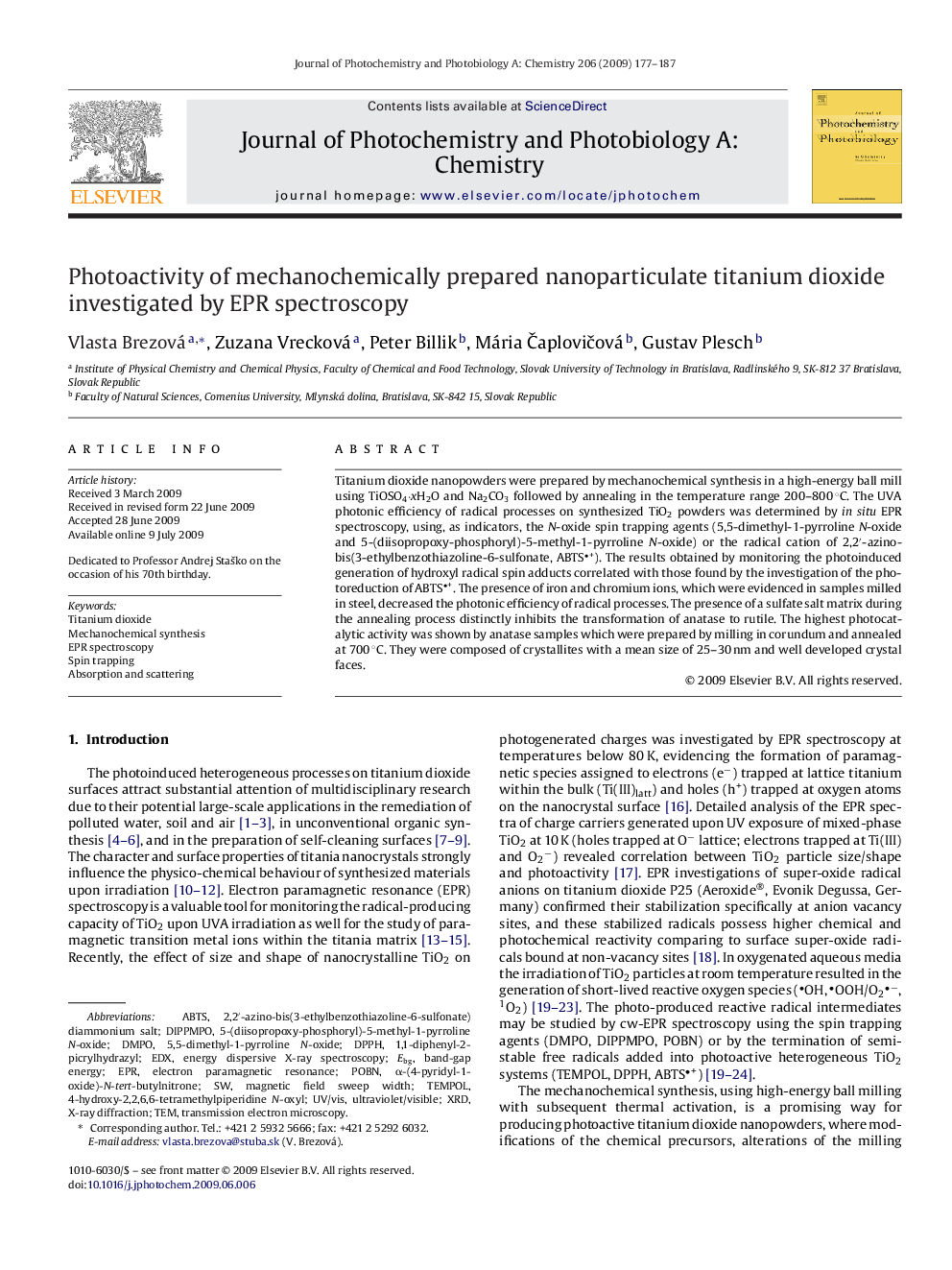| Article ID | Journal | Published Year | Pages | File Type |
|---|---|---|---|---|
| 6493150 | Journal of Photochemistry and Photobiology A: Chemistry | 2009 | 11 Pages |
Abstract
Titanium dioxide nanopowders were prepared by mechanochemical synthesis in a high-energy ball mill using TiOSO4·xH2O and Na2CO3 followed by annealing in the temperature range 200-800 °C. The UVA photonic efficiency of radical processes on synthesized TiO2 powders was determined by in situ EPR spectroscopy, using, as indicators, the N-oxide spin trapping agents (5,5-dimethyl-1-pyrroline N-oxide and 5-(diisopropoxy-phosphoryl)-5-methyl-1-pyrroline N-oxide) or the radical cation of 2,2â²-azino-bis(3-ethylbenzothiazoline-6-sulfonate, ABTS+). The results obtained by monitoring the photoinduced generation of hydroxyl radical spin adducts correlated with those found by the investigation of the photoreduction of ABTS+. The presence of iron and chromium ions, which were evidenced in samples milled in steel, decreased the photonic efficiency of radical processes. The presence of a sulfate salt matrix during the annealing process distinctly inhibits the transformation of anatase to rutile. The highest photocatalytic activity was shown by anatase samples which were prepared by milling in corundum and annealed at 700 °C. They were composed of crystallites with a mean size of 25-30 nm and well developed crystal faces.
Keywords
EBGDIPPMPOPOBNABTSEDXDPPHDMPO1,1-diphenyl-2-picrylhydrazyl5,5-dimethyl-1-pyrroline N-oxideUV/Visα-(4-pyridyl-1-oxide)-N-tert-butylnitroneEnergy Dispersive X-ray Spectroscopyband-gap energyTemEPRElectron paramagnetic resonanceSpin trappingAbsorption and scatteringTitanium dioxideTempolmechanochemical synthesisEPR spectroscopyultraviolet/visibleTransmission electron microscopyXRDX-ray diffraction
Related Topics
Physical Sciences and Engineering
Chemical Engineering
Bioengineering
Authors
Vlasta Brezová, Zuzana Vrecková, Peter Billik, Mária ÄaploviÄová, Gustav Plesch,
